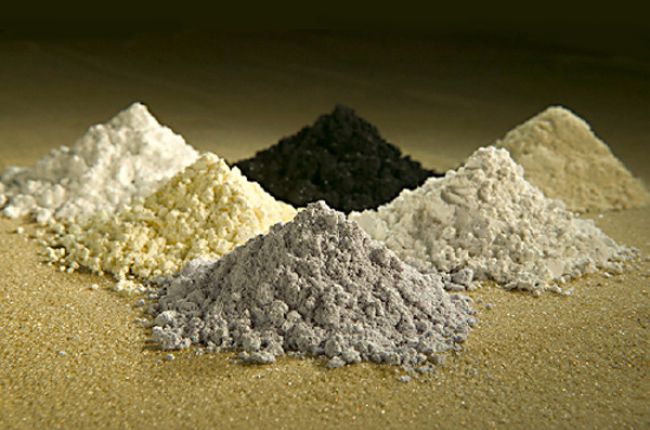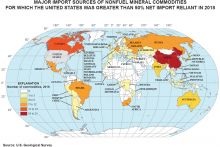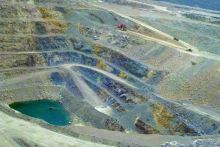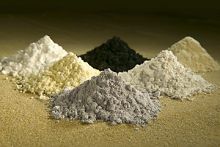
U.S. Geological Survey news release "Going Critical"
The rare earth elements (REE) are a set of seventeen metallic elements. These include the fifteen lanthanides on the periodic table plus scandium and yttrium.
Rare earth elements are an essential part of many high-tech devices. The U.S. Geological Survey news release "Going Critical" explains:
"Rare-earth elements (REE) are necessary components of more than 200 products across a wide range of applications, especially high-tech consumer products, such as cellular telephones, computer hard drives, electric and hybrid vehicles, and flat-screen monitors and televisions. Significant defense applications include electronic displays, guidance systems, lasers, and radar and sonar systems. Although the amount of REE used in a product may not be a significant part of that product by weight, value, or volume, the REE can be necessary for the device to function. For example, magnets made of REE often represent only a small fraction of the total weight, but without them, the spindle motors and voice coils of desktops and laptops would not be possible.
In 1993, 38 percent of world production of REEs was in China, 33 percent was in the United States, 12 percent was in Australia, and five percent each was in Malaysia and India. Several other countries, including Brazil, Canada, South Africa, Sri Lanka, and Thailand, made up the remainder. However, in 2008, China accounted for more than 90 percent of world production of REEs, and by 2011, China accounted for 97 percent of world production. Beginning in 1990 and beyond, supplies of REEs became an issue as the Government of China began to change the amount of the REEs that it allows to be produced and exported. The Chinese Government also began to limit the number of Chinese and Sino-foreign joint-venture companies that could export REEs from China."
Learn More:
- REE Background (Webpage), Wyoming State Geological Survey
A precise definition of rare earth elements (REEs) and in-depth discussion of how common REEs are, worldwide REE production, and current REE production.
- Rare Earths Statistics and Information (Website), U.S. Geological Survey
Portal for information on annual production, price, and use of rare earth elements since 1997, plus links to further information.
- The Rare Earth Elements - Vital to Modern Technologies and Lifestyles (Factsheet), U.S. Geological Survey
Factsheet on the origin, distribution, abundance, supply and demand, and uses of rare earth elements
- The Principal Rare Earth Elements Deposits of the United States—A Summary of Domestic Deposits and a Global Perspective (Report), U.S. Geological Survey
Non-technical report providing an overview of the basic geology of rare earth elements including U.S. deposits, current sources and domestic reserves, and principal rare earth deposits of the United States.
- Tracking the Global Supply of Critical Materials (Webinar), American Geosciences Institute
2018 webinar detailing efforts from the U.S. and European Union to monitor the global production, trade, and usage of critical raw materials; identify and quantify vulnerabilities in supply; and support co-operation on production, recycling, and substitution of key mineral resources



